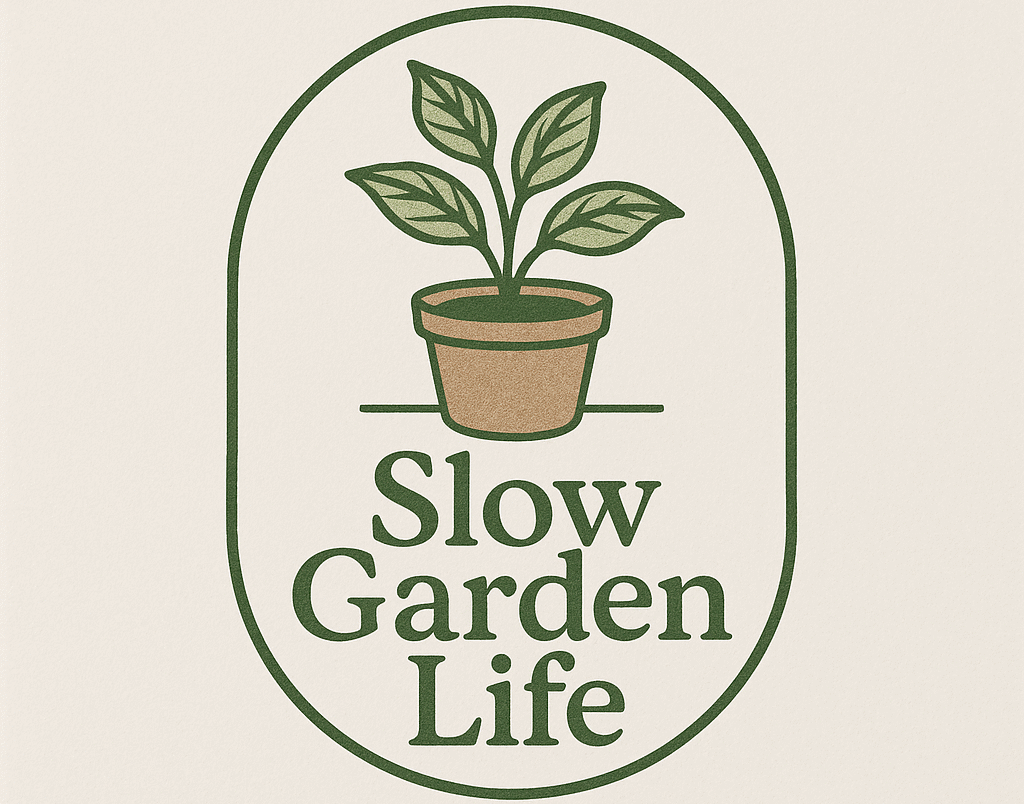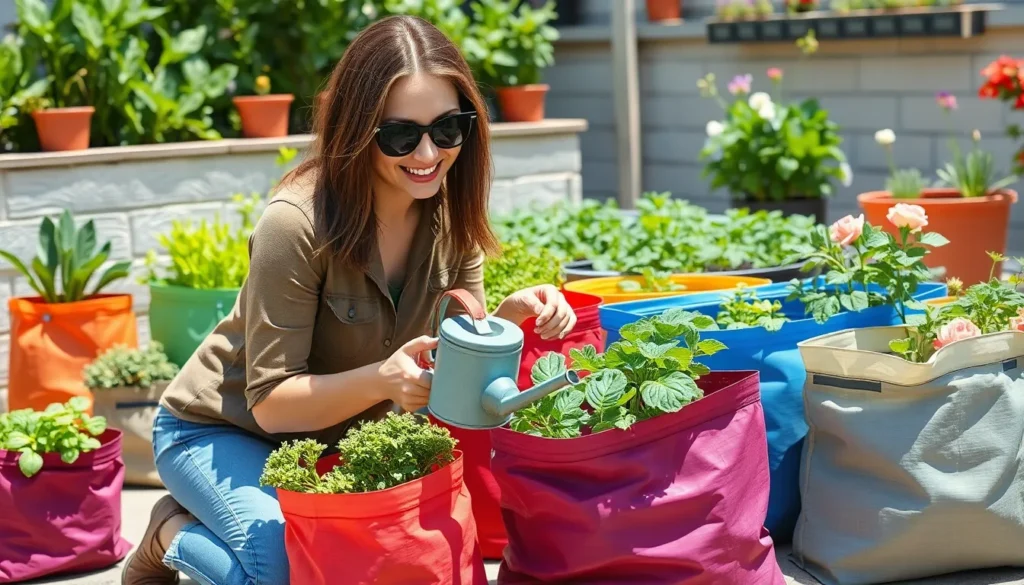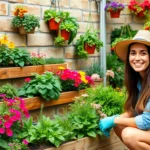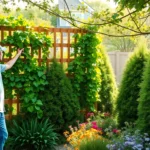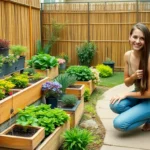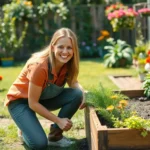We’ve all dreamed of having that perfect garden but struggled with poor soil, limited space, or drainage issues. Grow bag gardening offers the ultimate solution that’s revolutionizing how we approach home cultivation. These portable fabric containers deliver incredible flexibility while maximizing your growing potential in any environment.
Whether you’re working with a tiny balcony, rocky terrain, or simply want better control over your plants’ root systems, grow bags transform challenging spaces into thriving green sanctuaries. We’re seeing gardeners achieve remarkable results with everything from vibrant vegetables to stunning flowers using this innovative method.
The beauty of grow bag gardening lies in its adaptability – you can move your garden with the seasons, experiment with different plant combinations, and create stunning displays that traditional in-ground planting simply can’t match. Let’s explore the creative possibilities that’ll elevate your gardening game to new heights.
Choose the Right Grow Bags for Your Garden Vision
Success with grow bag gardening starts with selecting containers that match your exact growing goals and garden conditions. We’ll explore the key factors that determine which grow bags work best for different plants and situations.
Material Options: Fabric vs. Plastic vs. Biodegradable
Fabric grow bags offer superior breathability and root health benefits that most gardeners prefer. These nonwoven polypropylene containers allow air to reach plant roots, preventing root circling and promoting stronger root systems. We recommend fabric bags for tomatoes, peppers, and herbs since they provide excellent drainage and temperature regulation.
Plastic grow bags deliver durability and water retention for plants that need consistent moisture. These containers work well for lettuce, spinach, and other leafy greens that thrive in slightly more humid conditions. Plastic options cost less initially but may require replacement after 2-3 growing seasons due to UV degradation.
Biodegradable grow bags made from coconut coir or jute provide eco-friendly options for temporary plantings. We use these bags for annual flowers and vegetables that we’ll harvest within a single season. They break down naturally in compost piles after use, making them perfect for sustainable garden practices.
Size Selection Based on Plant Requirements
Small bags (1-3 gallons) accommodate herbs like basil, cilantro, and oregano that have compact root systems. We plant lettuce, radishes, and small pepper varieties in these containers for maximum space efficiency on patios and balconies.
Medium bags (5-10 gallons) support most vegetable plants including bush tomatoes, eggplants, and cucumber varieties. These sizes provide adequate root space for plants that produce throughout the growing season without taking up excessive garden space.
Large bags (15-30 gallons) handle indeterminate tomatoes, fruit trees, and sprawling plants like pumpkins or winter squash. We choose these containers for plants that need extensive root development and will remain in place for multiple seasons.
| Plant Type | Recommended Bag Size | Root Depth Needed |
|---|---|---|
| Herbs | 1-3 gallons | 6-8 inches |
| Leafy Greens | 3-5 gallons | 8-10 inches |
| Bush Vegetables | 5-10 gallons | 12-18 inches |
| Indeterminate Plants | 15-30 gallons | 18-24 inches |
Drainage and Breathability Features
Proper drainage holes prevent waterlogged soil that kills plant roots through oxygen deprivation. We look for grow bags with multiple drainage points around the bottom and lower sides to ensure excess water escapes quickly after watering or rainfall.
Breathable fabric construction allows air circulation through container walls, creating healthier root environments than solid containers. This feature prevents root binding and encourages fibrous root growth that improves nutrient uptake and plant stability.
Reinforced handles make moving planted containers easier when we need to relocate them for optimal sun exposure or seasonal protection. Double-stitched handles support the weight of soil and mature plants without tearing during transport around the garden.
Create a Vertical Grow Bag Tower Garden
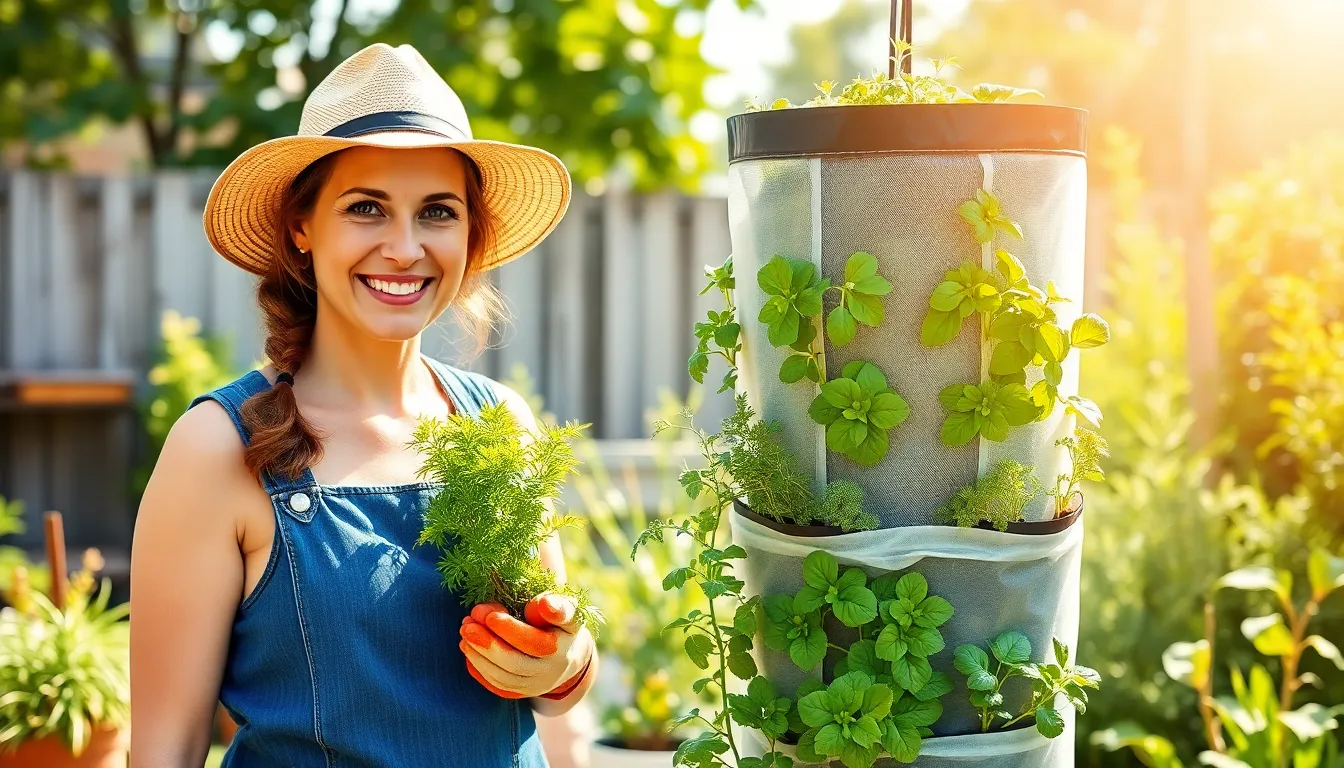
Building upward transforms small spaces into productive growing areas while maximizing our harvest potential. We can create stunning vertical displays that produce more food per square foot than traditional horizontal gardens.
Stacking Techniques for Maximum Space Efficiency
Sturdy brackets form the foundation of our vertical tower system by securing grow bags to wooden or metal frames. Metal brackets offer superior durability and can support heavier bags filled with soil and mature plants.
Staggered layering prevents waterlogging while creating optimal growing conditions for each tier. We position bags in a zigzag pattern rather than directly stacking them, allowing adequate airflow and preventing water accumulation in lower levels.
Trellises and climbing supports encourage upward growth by providing structure for vining plants like beans, peas, and cucumbers. These accessories double our growing space by utilizing the vertical dimension above each bag.
Frame materials determine system longevity and weight capacity. Cedar wood resists moisture and insects naturally, while galvanized steel frames support heavier loads and withstand harsh weather conditions.
Plant Selection for Tiered Growing
Compact varieties thrive in vertical arrangements by requiring minimal horizontal space while producing substantial yields. Lettuce, herbs, and cherry tomatoes adapt well to the confined root space of stacked grow bags.
Top tier placement suits lightweight plants like leafy greens and herbs that won’t stress the supporting structure. We position lettuce, spinach, and basil in upper bags where they receive optimal sunlight exposure.
Middle sections accommodate medium sized vegetables such as peppers, compact eggplants, and determinate tomato varieties. These plants benefit from moderate root depth while contributing structural stability to the tower.
Bottom bags support heavy producers like indeterminate tomatoes, squash, and root vegetables that require deeper soil and can anchor the entire system. We plant these foundation crops in 20 gallon or larger bags for adequate root development.
Companion planting maximizes benefits by pairing complementary species within our vertical system. Marigolds planted with tomatoes deter pests and improve growth while creating attractive color combinations throughout the tower.
Watering and Maintenance Tips
Top down watering utilizes gravity to distribute moisture evenly through all tiers of our vertical garden. We water the uppermost bags first, allowing excess water to cascade down and hydrate lower levels naturally.
Drip irrigation systems provide consistent moisture without manual daily watering requirements. We install timers and emitters at each level to deliver precise amounts of water based on individual plant needs.
Soil monitoring prevents nutrient deficiencies that commonly occur in container growing systems. We check moisture levels weekly using our finger or a moisture meter, ensuring soil remains consistently damp but not waterlogged.
Regular pruning maintains plant health and prevents overcrowding in our confined vertical space. We remove dead leaves, trim excessive growth, and pinch flowers on herbs to encourage continued leaf production throughout the growing season.
Design a Mobile Grow Bag Container Garden
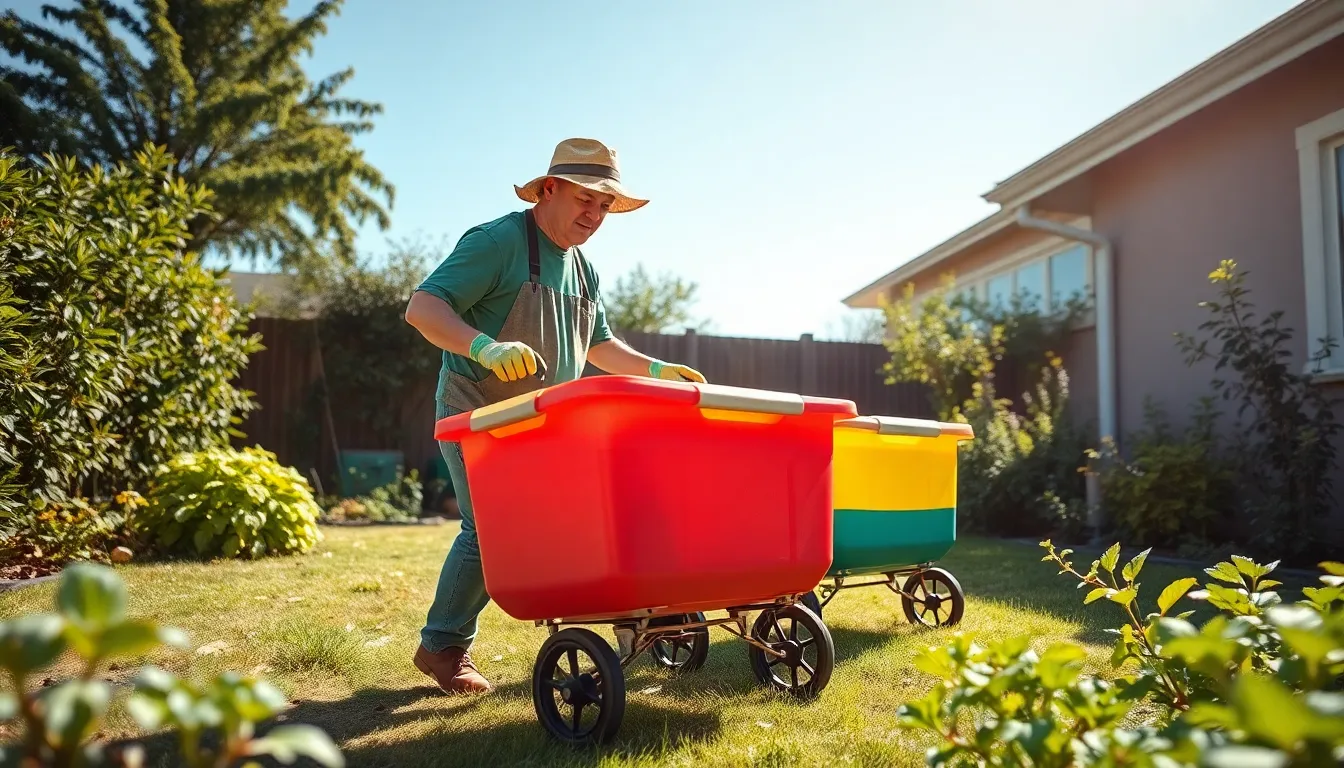
Creating a mobile grow bag system transforms our gardening flexibility and maximizes plant health through strategic positioning. We can adapt our container garden to seasonal changes and weather patterns while maintaining optimal growing conditions year-round.
Wheels and Portability Answers
Heavy-duty caster wheels make our grow bags effortlessly mobile for optimal plant positioning. We attach these sturdy wheels directly to wooden platforms or plant caddies that support multiple 5 to 20-gallon grow bags simultaneously.
Durable handles enhance our ability to move individual containers without straining our backs. We choose grow bags with reinforced fabric handles that won’t tear under the weight of soil and mature plants.
Plant dollies distribute weight evenly and protect our floors from scratches when moving containers indoors. We select models with locking wheels to prevent unwanted movement during windy conditions.
Rolling plant stands accommodate multiple smaller grow bags while maintaining easy access for maintenance. We position these mobile units to create ever-changing garden arrangements that change with our plants’ needs.
Seasonal Movement Strategies
Summer positioning requires moving our grow bags to sunny locations where plants receive 6-8 hours of direct sunlight daily. We relocate containers throughout the day to follow optimal light patterns and prevent afternoon scorching.
Winter relocation involves moving frost-sensitive plants to protected areas or indoor spaces with adequate ventilation. We transition our grow bags to south-facing windows or heated greenhouses to maintain consistent temperatures above 50°F.
Spring placement focuses on gradually exposing plants to outdoor conditions through strategic positioning. We move containers to partially shaded areas initially then increase sun exposure as plants acclimate to seasonal changes.
Fall preparation includes relocating tender plants to sheltered locations while moving cool-season crops to areas with morning sun exposure. We position our mobile garden to capture maximum light as daylight hours decrease.
Weather Protection Considerations
Shade cloths shield our plants from intense sunlight during peak summer temperatures exceeding 85°F. We install 30-50% shade cloth over mobile grow bag setups to prevent leaf scorch and reduce water stress.
Wind barriers protect our container plants from damaging gusts that can dry out soil quickly. We position grow bags near walls or install temporary windbreaks using fabric screens or wooden panels.
Rain covers prevent waterlogging during heavy precipitation by redirecting excess moisture away from our containers. We apply waterproof tarps or clear plastic covers that maintain light penetration while shedding water effectively.
Frost protection involves covering our mobile containers with insulating materials during unexpected temperature drops. We use row covers or blankets that trap warm air around plants while allowing for easy removal when temperatures rise.
Build a Grow Bag Herb Garden Kitchen Setup

We’ll transform your kitchen gardening experience by creating a dedicated herb garden using 2 to 5-gallon grow bags. These versatile containers enable us to cultivate fresh culinary herbs within arm’s reach of our cooking space.
Compact Indoor Growing Answers
Indoor grow bag gardens thrive in tight spaces like balconies and patios thanks to their lightweight and portable design. We recommend positioning your herb containers near windows that receive 4-6 hours of direct sunlight daily. Artificial grow lights work perfectly for spaces lacking adequate natural illumination.
Temperature consistency becomes crucial for indoor herb cultivation, with optimal ranges between 65°F to 75°F throughout the growing season. We maintain this environment by avoiding placement near heating vents or air conditioning units that create temperature fluctuations.
Strategic container arrangement maximizes our growing potential in limited square footage. Tiered plant stands allow us to stack multiple grow bags vertically without blocking light from reaching lower plants. Rolling plant caddies provide mobility for seasonal adjustments and easy access during maintenance tasks.
Culinary Herb Combinations
Mediterranean flavor profiles emerge when we combine basil, rosemary, and thyme in adjacent grow bags for convenient harvesting. These classic herbs complement each other in cooking and share similar growing requirements for consistent care routines.
Asian inspired combinations featuring cilantro, mint, and lemongrass create aromatic gardens perfect for Thai and Vietnamese cuisine. We plant these herbs in separate containers to prevent the aggressive spreading nature of mint from overwhelming neighboring plants.
Italian cooking essentials like parsley, oregano, and basil form the foundation of countless recipes when grown together. Fresh availability of these herbs transforms home cooking by providing superior flavor compared to dried alternatives.
Harvesting and Maintenance Schedule
Regular harvesting encourages continuous new growth while preventing herbs from flowering and becoming bitter. We harvest frequently by pinching stems just above leaf nodes to promote bushier plant development.
Soil moisture monitoring prevents both overwatering and drought stress by checking the top inch of soil before adding water. Coast of Maine raised bed mix combined with compost layers provides excellent drainage and nutrient retention for healthy root systems.
Monthly fertilization using organic supplements maintains soil quality throughout the growing season without chemical buildup. We apply liquid kelp or fish emulsion fertilizers according to package directions for optimal plant nutrition.
Pruning activities maintain plant shape and size while promoting vigorous growth patterns. Regular removal of dead or yellowing leaves prevents disease issues and keeps our herb garden looking attractive in kitchen spaces.
Establish a Grow Bag Vegetable Production System
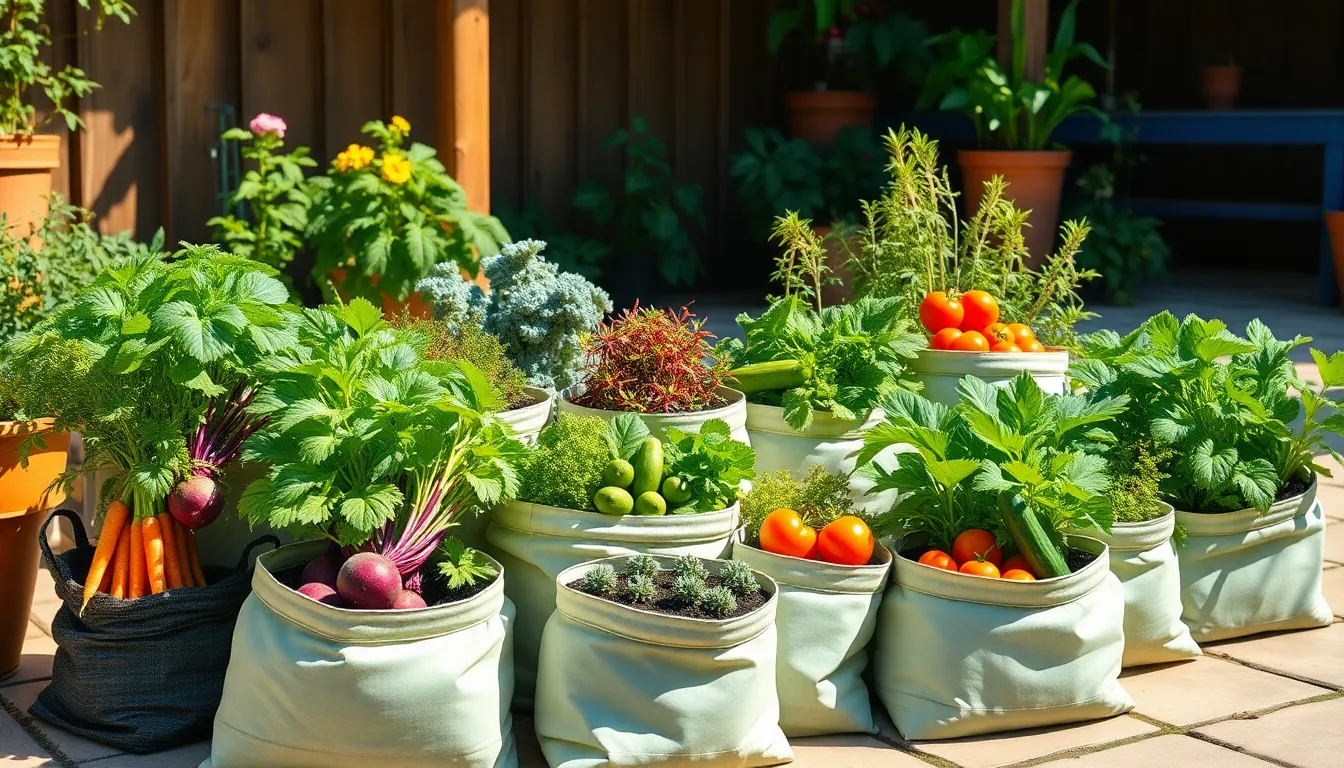
We can create a highly productive vegetable garden using grow bags by implementing strategic growing techniques. These portable containers allow us to cultivate diverse vegetables while maintaining optimal growing conditions for each plant type.
Root Vegetable Growing Techniques
Root vegetables like carrots and beets require specialized growing techniques in grow bags to accommodate their underground development. Carrots thrive in 3-gallon bags with sufficient depth for their taproot system, while beets adapt well to smaller containers due to their compact root structure.
Potatoes demand deeper growing spaces and benefit significantly from 10-gallon bags with access flaps for harvesting convenience. These specialized bags allow us to check potato development without disturbing the entire root system. We recommend selecting varieties based on maturity time, with early varieties producing results in 70-80 days.
Deep grow bags measuring at least 12 inches provide adequate space for proper root expansion. Soil composition becomes critical for root vegetables, requiring loose, well-draining potting mix to prevent stunted growth. We suggest adding perlite or coarse sand to improve soil texture and drainage.
Companion Planting Strategies
Companion planting maximizes grow bag productivity by combining plants that benefit each other’s growth and pest resistance. Tomatoes and basil create an excellent partnership, with basil naturally repelling pests that commonly target tomato plants while improving flavor development.
Carrots and radishes work synergistically in shared grow bags, as radishes help break up compacted soil for carrot root penetration. Radishes mature quickly in 25-30 days, creating space for carrots to expand their root systems. This combination optimizes space utilization in medium-sized grow bags.
Cucumbers and dill form another productive pairing, with dill improving cucumber growth while deterring aphids and other harmful insects. Bush cucumber varieties work particularly well in this arrangement, requiring minimal vertical support. We can plant these combinations in 5-7 gallon bags for optimal results.
Strategic plant spacing ensures each companion receives adequate nutrients and sunlight. Dense plantings require more frequent watering and feeding to support multiple plants in limited container space.
Succession Planting for Continuous Harvest
Succession planting ensures continuous vegetable production throughout the growing season by staggering planting times. Radishes respond exceptionally well to this technique, with new plantings every 1-2 weeks providing fresh harvests from spring through fall.
Lettuces and greens benefit from weekly plantings to maintain steady supplies of tender baby leaves. We recommend using separate grow bags for each planting cycle to manage harvest timing effectively. Cut and come again varieties extend harvest periods from individual plantings.
Carrots and beets require 2-3 week intervals between plantings due to their longer maturation periods. Early varieties mature in 50-60 days, while storage varieties need 70-80 days for full development. This timing allows us to harvest mature vegetables while younger plantings continue developing.
Planning succession schedules based on days to maturity ensures gap-free harvests. We track planting dates and expected harvest windows to maintain consistent vegetable supplies for kitchen use.
Construct a Grow Bag Flower Display Garden
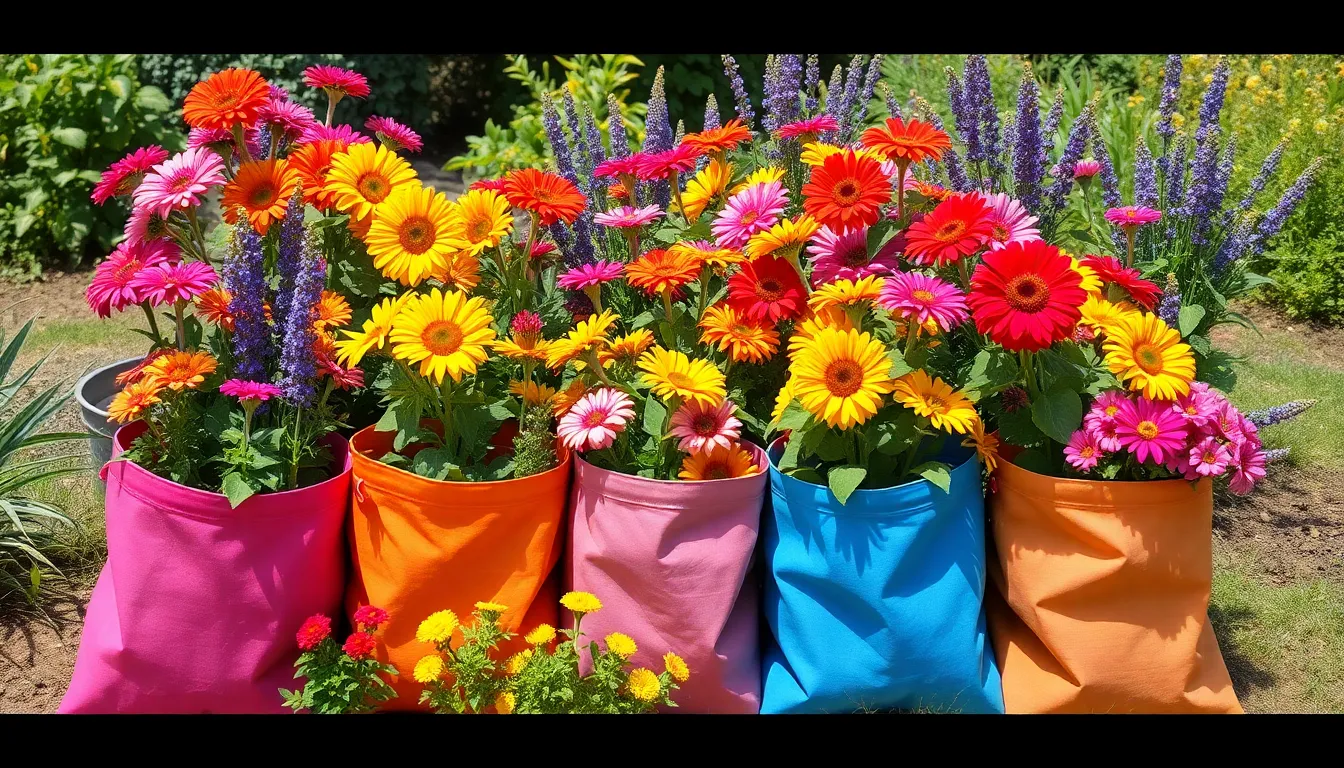
Creating a stunning flower display garden with grow bags transforms any space into a colorful showcase. We’ll explore strategic design approaches that maximize visual impact while supporting healthy plant growth.
Color Coordination and Design Principles
Harmonious color schemes create visually appealing displays that capture attention from every angle. We recommend pairing complementary colors like yellow with blue or orange with green to establish ever-changing contrast throughout your garden space.
Layering techniques add depth and visual interest to your grow bag arrangements. Position taller flowers towards the back of your display area and shorter varieties towards the front, creating natural viewing angles that showcase each plant’s unique characteristics.
Symmetrical arrangements bring balance to your flower garden design. Balance the overall composition by placing similar colors or shapes on either side of a central focal point, whether that’s a striking specimen plant or decorative garden element.
Strategic spacing between grow bags prevents overcrowding while allowing each container to receive adequate airflow. We suggest leaving 6 to 12 inches between bags depending on plant mature size and growth patterns.
Seasonal Blooming Sequences
Spring plantings establish the foundation for year round color displays. Plant bulbs like tulips and daffodils in early spring, then add annuals like pansies or violas for immediate seasonal color that bridges the gap until summer varieties take hold.
Summer transitions bring warm season flowers into full bloom across your garden space. Transition to heat loving varieties like sunflowers, cosmos, and zinnias that thrive in higher temperatures and provide abundant blooms throughout the hottest months.
Fall arrangements extend your growing season with vibrant autumn exact varieties. Use mums, asters, and marigolds to create rich seasonal displays that complement changing foliage colors in your surrounding industry.
Winter adaptations maintain visual interest during colder months through strategic plant selection. Incorporate evergreen branches and cold hardy flowers like cyclamen for climates that experience freezing temperatures, ensuring your garden remains attractive year round.
Pollinator-Friendly Plant Selections
Butterfly attracting varieties bring movement and life to your grow bag flower garden. Plant zinnias, sunflowers, and butterfly bush to create landing zones that support local butterfly populations while adding ever-changing visual elements to your display.
Bee supporting flowers contribute to essential pollination networks in your area. Include fragrant options like lavender, coneflowers, and black eyed Susans that provide nectar sources throughout different blooming periods, supporting bee colonies during critical feeding times.
Hummingbird magnets add another dimension to your pollinator friendly garden design. Use trumpet shaped flowers like honeysuckle and fuchsia that accommodate hummingbird feeding behaviors, creating opportunities to observe these remarkable birds up close.
Native plant integration supports local ecosystems while reducing maintenance requirements. Research indigenous flowering plants in your region that naturally thrive in grow bag conditions, creating sustainable displays that benefit both your garden and local wildlife populations.
Develop a Grow Bag Fruit Growing Operation
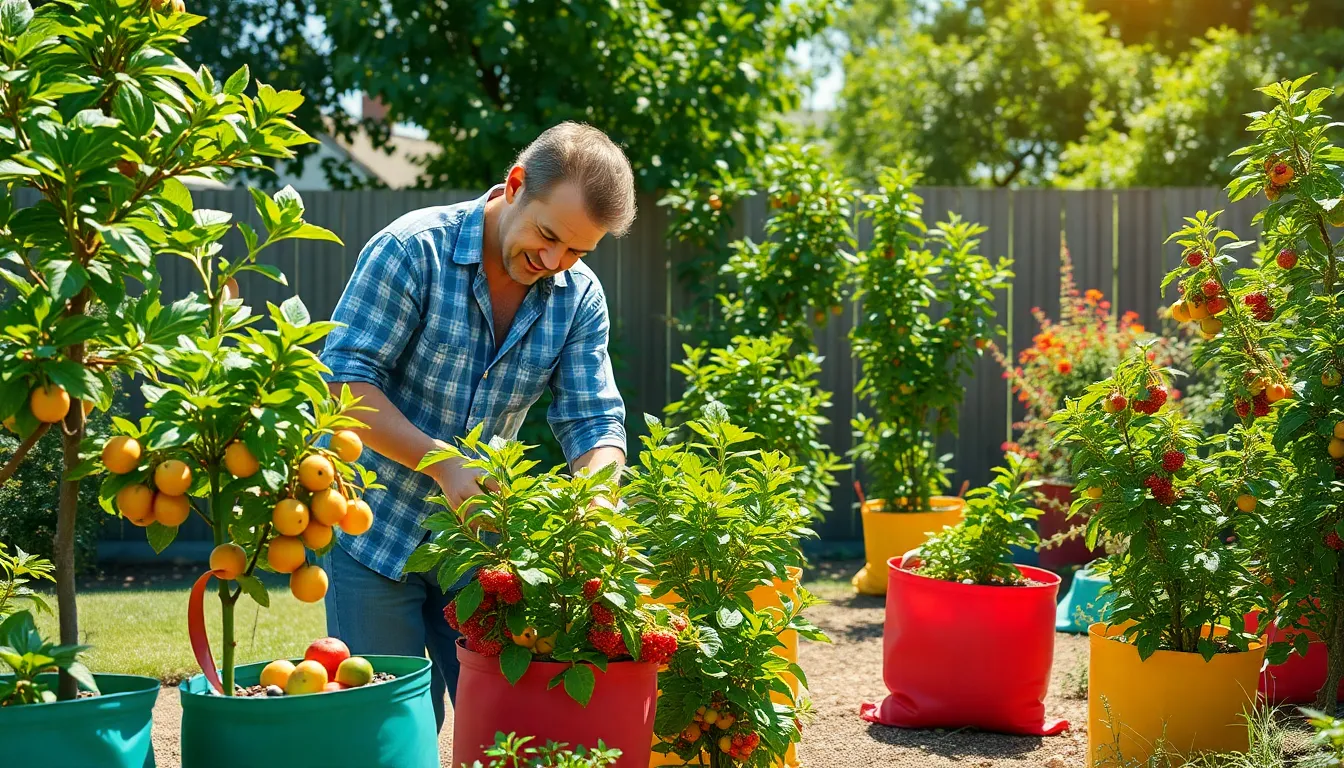
We can transform our gardening approach by establishing a comprehensive fruit growing operation using strategically sized grow bags. This method allows us to cultivate fresh fruit in controlled environments while maintaining the flexibility our mobile garden systems provide.
Dwarf Fruit Tree Cultivation
Compact varieties form the foundation of our grow bag fruit operation. We recommend selecting dwarf or semi-dwarf fruit trees like citrus, apples, or blueberries that adapt well to container growing. These varieties require at least 5-gallon grow bags to accommodate their root systems effectively.
Sunlight exposure directly impacts fruit production quality. Our fruit trees need a minimum of 6 hours of direct sunlight daily to develop properly. We position the bags in locations that receive optimal morning and afternoon light throughout the growing season.
Consistent watering schedules maintain healthy fruit development. We monitor soil moisture levels regularly and water when the top inch feels dry. Adding mulch around the base helps retain moisture and regulate soil temperature fluctuations.
Well-draining potting mix prevents root rot issues. We fill our grow bags with quality potting soil that allows excess water to drain freely. This prevents waterlogged conditions that can damage fruit tree roots.
Berry Bush Container Management
Container sizing determines berry bush success rates. We use a minimum of 5-gallon grow bags per blueberry bush to allow adequate root growth space. Larger containers produce more robust plants and higher yields.
Soil pH levels require exact maintenance for berry production. We maintain slightly acidic soil conditions around 5.5 pH for blueberries and most berry varieties. Testing soil pH monthly helps us make necessary adjustments using organic amendments.
Annual pruning promotes bush shape and productivity. We remove dead or crossing branches during dormant seasons to encourage new growth. This practice improves air circulation and reduces disease pressure within the container environment.
Strategic positioning maximizes berry harvest potential. We arrange berry bushes in locations that receive morning sun and afternoon protection from intense heat. This positioning prevents fruit from becoming overripe or damaged during peak summer temperatures.
Support Systems and Pruning Methods
Internal cage systems provide essential structural support. We install sturdy cages or trellises for plants like tomatoes and peppers before they reach full size. These supports prevent branches from breaking under fruit weight.
External trellis options maximize vertical growing space. We attach climbing supports to nearby structures for vining fruit plants. This method effectively doubles our growing area while maintaining proper plant support.
Regular pruning controls plant size and encourages fruiting. We trim excess growth weekly during active growing seasons to direct energy toward fruit production. Removing suckers and water sprouts helps maintain plant focus on developing quality fruit.
Organic fertilization supports continuous fruit development. We apply Espoma Organic Tomato Tone monthly during growing season to provide essential nutrients. This organic approach maintains soil health while promoting steady fruit production throughout the harvest period.
Organize a Grow Bag Greenhouse Extension

We can transform our grow bag gardening into a year-round operation by organizing an efficient greenhouse extension. This strategic approach maximizes both space and growing potential while protecting our plants from weather extremes.
Temperature Control and Ventilation
Maintain consistent temperatures by installing shade cloths or reflective materials throughout our greenhouse interior. These materials prevent excessive heat buildup during summer months while creating optimal growing conditions for our grow bag plants.
Install fans or passive ventilation systems to ensure proper air circulation around our grow bags. Roll-up sides and roof vents provide natural airflow that prevents overheating and reduces humidity-related plant diseases.
Insulate grow bags during cold months using mulch or bubble wrap to protect root systems from temperature fluctuations. This insulation technique maintains soil temperature consistency and prevents root damage from unexpected temperature drops.
Position grow bags strategically within the greenhouse to take advantage of natural temperature zones. We place heat-loving plants like tomatoes and peppers in warmer areas while positioning cool-season crops near ventilation openings.
Season Extension Techniques
Start seeds indoors or select early cold-tolerant crops to gain a valuable head start on the growing season. This technique allows us to begin harvesting weeks before traditional outdoor gardening becomes viable.
Install hoop houses or low tunnels directly over our grow bags for additional frost protection and season extension capabilities. These portable structures create microclimates that protect plants from unexpected temperature drops.
Move grow bags to sheltered areas when extreme weather conditions threaten our plants. The mobility of grow bags allows us to quickly relocate vulnerable plants to protected spaces during storms or severe cold snaps.
Combine floating row covers with our grow bag system for layered protection against frost and pests. This dual protection method extends our growing season while maintaining plant health throughout challenging weather periods.
Space Optimization Strategies
Choose compact or bush varieties specifically suited for grow bag cultivation, such as determinate tomatoes and bush cucumbers. These varieties maximize yield while fitting perfectly within our greenhouse space constraints.
Use vertical supports like trellises, cages, or cattle panels for vining crops to conserve valuable horizontal space. Vertical growing techniques effectively double our planting capacity within the same greenhouse footprint.
Carry out succession planting by following quick-maturing crops like radishes with another crop immediately after harvest. This rotation strategy ensures continuous production throughout the entire growing season.
Arrange grow bags in grid patterns or along designated pathways for easy access and optimal sunlight exposure. Strategic placement allows us to tend to all plants efficiently while maximizing the available growing space.
Select appropriate grow bag sizes for each plant variety to avoid overcrowding and ensure healthy plant development. Proper sizing prevents competition for nutrients and space while promoting vigorous growth patterns.
Install a Grow Bag Hydroponic System
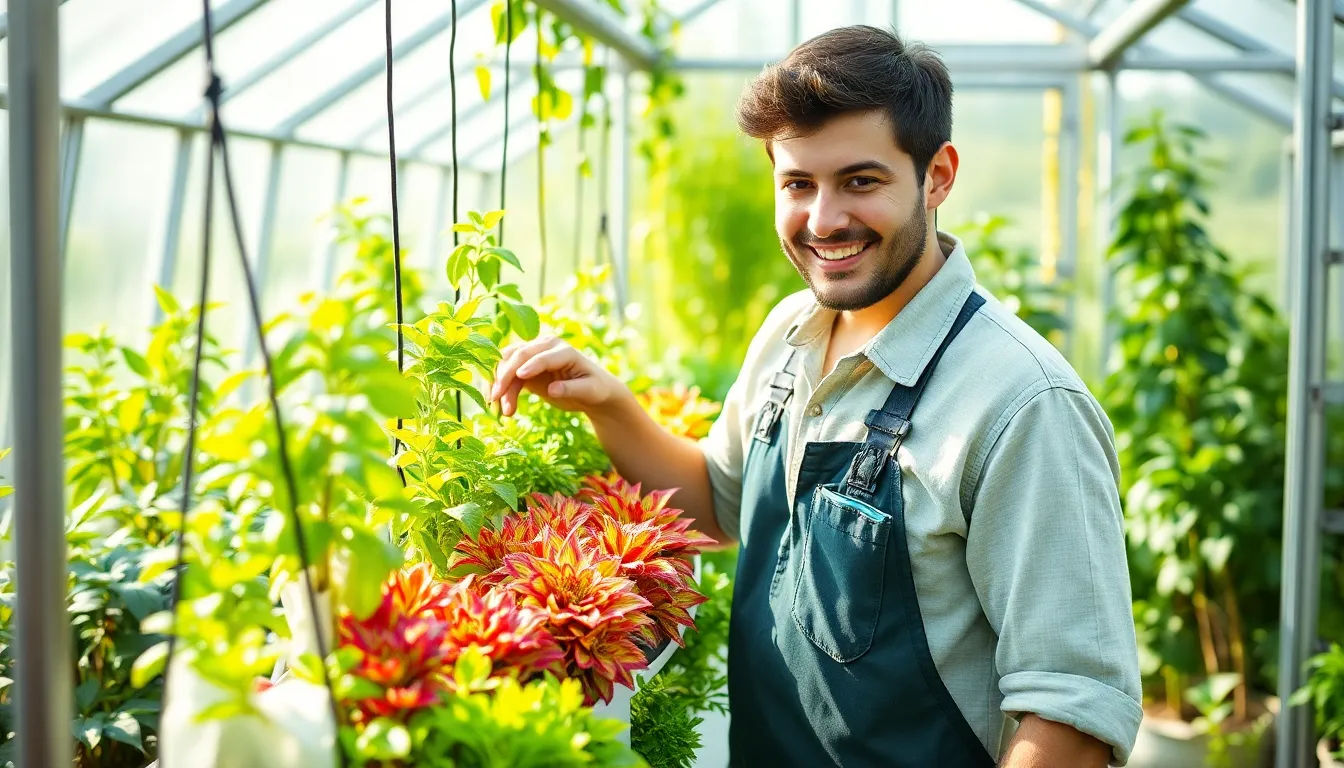
Setting up a hydroponic system with grow bags combines the mobility of container gardening with the efficiency of soilless cultivation. We’ll transform our traditional grow bag setup into a high-performance hydroponic operation that delivers precise nutrition directly to plant roots.
Water and Nutrient Delivery Methods
Deep Water Culture (DWC) systems work exceptionally well with fabric grow bags positioned above aerated nutrient reservoirs. We place our grow bags in net pot holders or custom platforms that allow root systems to extend into oxygenated water below. Air pumps supply continuous oxygen circulation beneath the waterline, which significantly improves root health and nutrient uptake rates.
Drip irrigation systems offer precise nutrient delivery through small tubes connected to each grow bag. We install emitter stakes or drip rings that distribute the nutrient solution evenly across the growing medium surface. Timer controlled pumps ensure consistent feeding schedules, while collection trays beneath each bag capture excess solution for recirculation back to the main reservoir.
Ebb and flow systems flood grow bags periodically with nutrient solution before draining back to the reservoir. We position our bags on flood tables or custom platforms that allow complete saturation of the growing medium during feeding cycles. Drainage ensures roots receive both nutrients and oxygen during the drying phases between floods.
Growing Medium Alternatives
Coconut coir provides excellent water retention and natural pH buffering properties in hydroponic grow bags. We mix coir with perlite in a 70:30 ratio to create optimal moisture holding capacity while maintaining proper drainage. This organic medium supports beneficial microbial activity that enhances nutrient availability.
Vermiculite retains moisture effectively while providing essential insulation for root systems during temperature fluctuations. We use coarse grade vermiculite combined with clay pellets to prevent compaction and maintain air pockets throughout the growing season. Its mineral content slowly releases potassium and magnesium to supplement liquid nutrients.
Clay pellets offer superior aeration and prevent waterlogging in high-frequency feeding systems. We layer expanded clay pebbles at the bottom of grow bags to improve drainage, then fill with lighter growing mediums above. These reusable pellets maintain their structure through multiple growing cycles without breaking down.
Rockwool cubes provide ideal conditions for seed starting and clone establishment in hydroponic grow bags. We pre-soak cubes in pH-adjusted water before transplanting, then surround them with our chosen growing medium. The sterile environment reduces disease risks while promoting rapid root development.
System Maintenance Requirements
pH monitoring requires daily attention in hydroponic grow bag systems to maintain optimal nutrient absorption. We test reservoir water twice daily using digital pH meters, adjusting levels between 5.5 and 6.5 for most vegetables. Fluctuations occur more rapidly in smaller reservoir systems, making consistent monitoring essential for plant health.
Nutrient level adjustments follow exact electrical conductivity (EC) readings that indicate solution strength. We measure EC values weekly and adjust concentrate additions based on plant growth stages and species requirements. Fresh nutrient answers replace depleted reservoirs every 2-3 weeks to prevent salt buildup and nutrient imbalances.
Aeration system maintenance involves cleaning air stones monthly and checking pump operation weekly. We replace air stones every 3-4 months to maintain optimal oxygen delivery rates. Pump performance directly affects root health, so backup systems prevent crop loss during equipment failures.
Pest control in hydroponic systems focuses on prevention through sterile growing mediums and filtered air circulation. We inspect plants weekly for early signs of aphids, spider mites, or fungal issues that spread rapidly in humid environments. Beneficial insects like ladybugs provide biological control without disrupting nutrient answers.
Implement Grow Bag Companion Planting Schemes
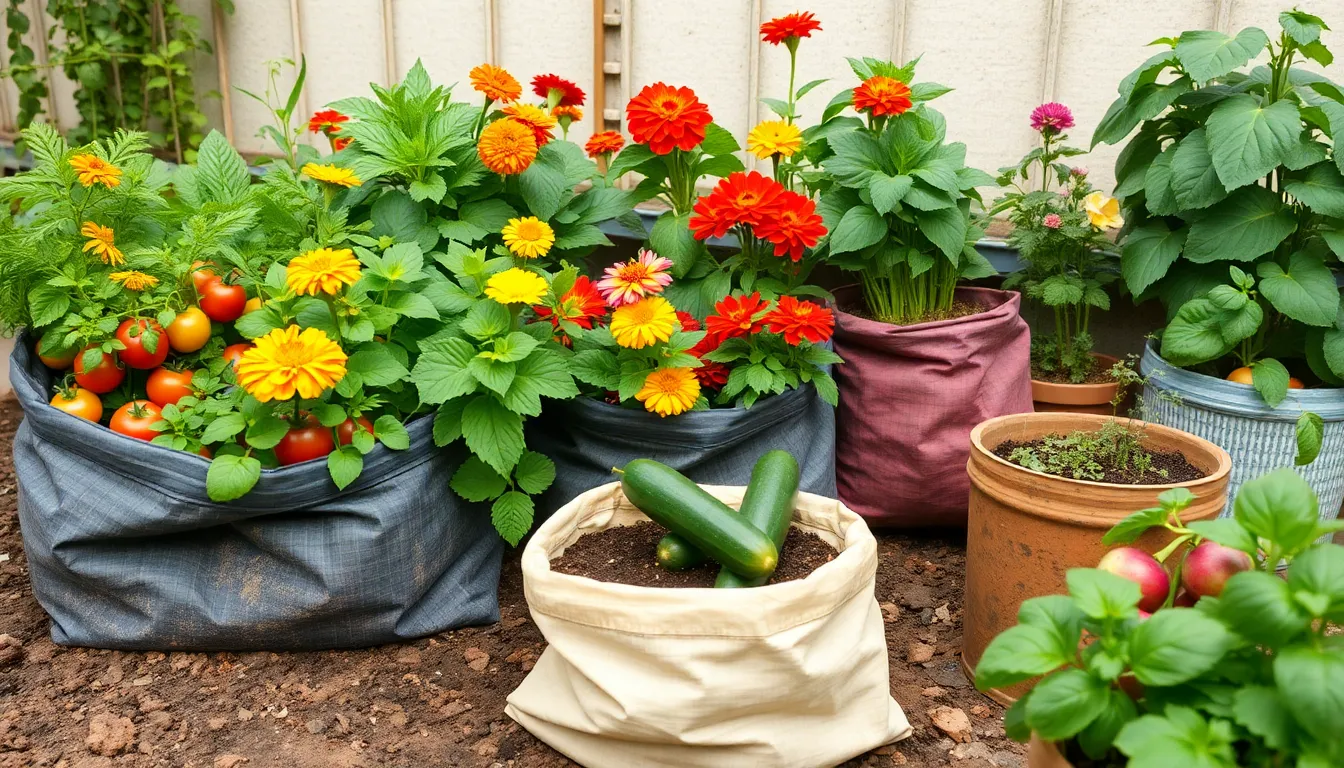
Building on our vertical growing and mobile container approaches, we can enhance our grow bag gardens through strategic companion planting that maximizes space efficiency and plant health. Smart plant partnerships transform individual containers into thriving micro-ecosystems that support each other’s growth.
Beneficial Plant Partnerships
Marigolds and tomatoes create one of our most effective grow bag combinations. Marigolds deter nematodes that commonly harm tomato roots, while their compact size fits perfectly around the base of tomato grow bags. We can plant 2 to 3 marigold seedlings in the same 10-gallon bag with our tomato plants.
Basil and tomatoes form another powerhouse partnership in our container gardens. Basil repels pests that target tomatoes and actually improves their flavor when grown nearby. Position basil plants in smaller 3-gallon bags around your larger tomato containers, or dedicate one section of a 15-gallon bag to this herb.
Radish and cucumber partnerships protect against devastating pest damage. Radish plants repel cucumber beetles, significantly reducing the risk of bacterial wilt that can destroy entire cucumber harvests. Plant radishes in the same grow bag as cucumbers or in adjacent containers for maximum protection.
Nasturtiums serve as living pest deterrents throughout our grow bag arrangements. These colorful flowers repel aphids, whiteflies, and other common garden pests while adding visual appeal to our container displays. We can plant them as border companions in larger bags or use separate 2-gallon containers positioned strategically around vulnerable plants.
Pest Control Through Plant Selection
Chives provide natural aphid control when positioned near susceptible vegetables. These hardy perennials repel aphids and other garden pests while providing fresh culinary herbs for our kitchen. Plant chives in 3-gallon grow bags and position them between rows of lettuce, cabbage, or other aphid-prone crops.
Nasturtiums function as trap crops that draw pests away from our main vegetables. Aphids and whiteflies prefer nasturtiums over most vegetable plants, making them excellent sacrificial companions. We can establish nasturtium barriers using 5-gallon grow bags placed around the perimeter of our garden space.
Basil’s pest-repelling properties extend beyond tomato partnerships. This aromatic herb repels mites and flies that commonly attack peppers, eggplants, and other nightshade family crops. Interplant basil in 2-gallon containers throughout our grow bag vegetable gardens for comprehensive pest management.
Marigold varieties offer different levels of pest protection based on their exact compounds. French marigolds excel at nematode control, while African marigolds repel whiteflies and aphids more effectively. We can select marigold types based on our exact pest challenges and plant them in 1-gallon containers for easy repositioning.
Soil Health and Nutrient Management
Well-draining soil mixtures prevent root rot and ensure healthy root development in our companion plantings. We must use potting mixes that contain perlite, vermiculite, or coconut coir to maintain proper drainage across all our grow bags. Standard garden soil becomes too compacted in containers and restricts root growth.
Regular fertilization becomes essential since grow bags rely on external nutrition sources. Container plants exhaust soil nutrients faster than ground plantings, requiring bi-weekly liquid fertilizer applications during the growing season. We can use balanced 10-10-10 fertilizers for most companion plantings or specialized formulas for exact plant needs.
Soil reuse strategies help us maintain sustainable grow bag operations. After harvesting, we can refresh used potting mix by adding 25% fresh compost and organic matter before replanting. This approach reduces waste while conserving resources across multiple growing seasons.
Nutrient cycling occurs naturally when we combine different plant types in our grow bags. Legumes like beans and peas fix nitrogen that benefits neighboring plants, while deep-rooted companions bring nutrients from lower soil levels to the surface. Strategic combinations reduce our fertilizer requirements while improving overall soil health.
Conclusion
We’ve explored countless ways to transform any space into a thriving garden using grow bags. From vertical towers that maximize small patios to mobile systems that follow the sun these innovative containers offer answers for every gardener’s unique situation.
Whether you’re starting with a simple herb collection on your windowsill or advancing to sophisticated hydroponic setups the flexibility of grow bag gardening opens doors to year-round cultivation. The combination of proper plant selection strategic positioning and thoughtful maintenance creates gardens that produce abundant harvests in the smallest spaces.
Your grow bag garden journey starts with a single container and your first seeds. As you gain experience you’ll discover new combinations and techniques that work best for your exact conditions making every growing season more rewarding than the last.
Frequently Asked Questions
What are the main benefits of using grow bags for gardening?
Grow bags offer excellent solutions for common gardening challenges including poor soil conditions, limited space, and drainage problems. They provide exceptional portability, allowing you to move plants with changing seasons and sunlight patterns. The fabric construction promotes healthy root development through better aeration and prevents root circling, leading to stronger, more productive plants.
How do I choose the right size grow bag for my plants?
Plant size determines bag requirements: herbs and lettuce need 1-3 gallon bags, bush vegetables like peppers require 5-7 gallons, while indeterminate tomatoes need 10-15 gallon containers. Root vegetables like carrots need deeper bags, while leafy greens can thrive in shallower, wider containers. Always consider the mature plant size when selecting.
What’s the difference between fabric, plastic, and biodegradable grow bags?
Fabric grow bags offer superior breathability and root health through air pruning, making them ideal for long-term growing. Plastic bags provide durability and better moisture retention but less aeration. Biodegradable bags work perfectly for temporary plantings and can be planted directly in the ground, though they’re less suitable for permanent installations.
How do I create a vertical grow bag tower garden?
Stack grow bags using sturdy metal brackets secured to frames, staggering placement for optimal airflow and water drainage. Use trellises for climbing plants to maximize vertical space. Place heavier plants at the bottom and lighter ones at the top. Ensure proper spacing between tiers for sunlight penetration and easy maintenance access.
Can I move grow bags around my garden easily?
Yes, mobility is a key advantage of grow bags. Use heavy-duty caster wheels for larger containers, reinforced handles for smaller bags, and plant dollies to protect floors. This flexibility allows you to optimize sunlight exposure throughout seasons, protect plants from extreme weather, and reorganize your garden layout as needed.
How often should I water plants in grow bags?
Grow bags typically require more frequent watering than ground planting due to increased drainage and evaporation. Check soil moisture daily by inserting your finger 1-2 inches deep. Water when the top inch feels dry. Consider drip irrigation systems for consistent moisture, especially in vertical arrangements or during hot weather.
What soil mix works best for grow bags?
Use well-draining potting mix combining compost, peat moss or coconut coir, and perlite. Avoid garden soil which becomes too heavy and doesn’t drain well in containers. A good ratio is 50% compost, 30% peat moss or coir, and 20% perlite. Add slow-release organic fertilizer for sustained nutrition.
Can I grow fruit trees in grow bags?
Yes, dwarf and semi-dwarf fruit trees thrive in large grow bags (15-25 gallons). Choose compact varieties suitable for containers. Ensure 6-8 hours of daily sunlight, consistent watering, and annual pruning. Use quality potting mix with good drainage. Berry bushes also work excellently in 5-10 gallon bags.
How do I protect grow bag plants from extreme weather?
Use shade cloths during intense heat, wind barriers for protection from strong winds, and rain covers during heavy downpours. For cold protection, move bags to sheltered areas or use frost blankets. The mobility of grow bags makes weather protection much easier than traditional ground gardening.
Can I reuse grow bags and soil from previous seasons?
Quality fabric grow bags can be reused for multiple seasons with proper cleaning. Refresh soil by removing old roots, adding fresh compost and slow-release fertilizer. Replace 30-50% of old soil with fresh potting mix. Rotate plant families to prevent disease buildup and maintain soil health through nutrient cycling.
